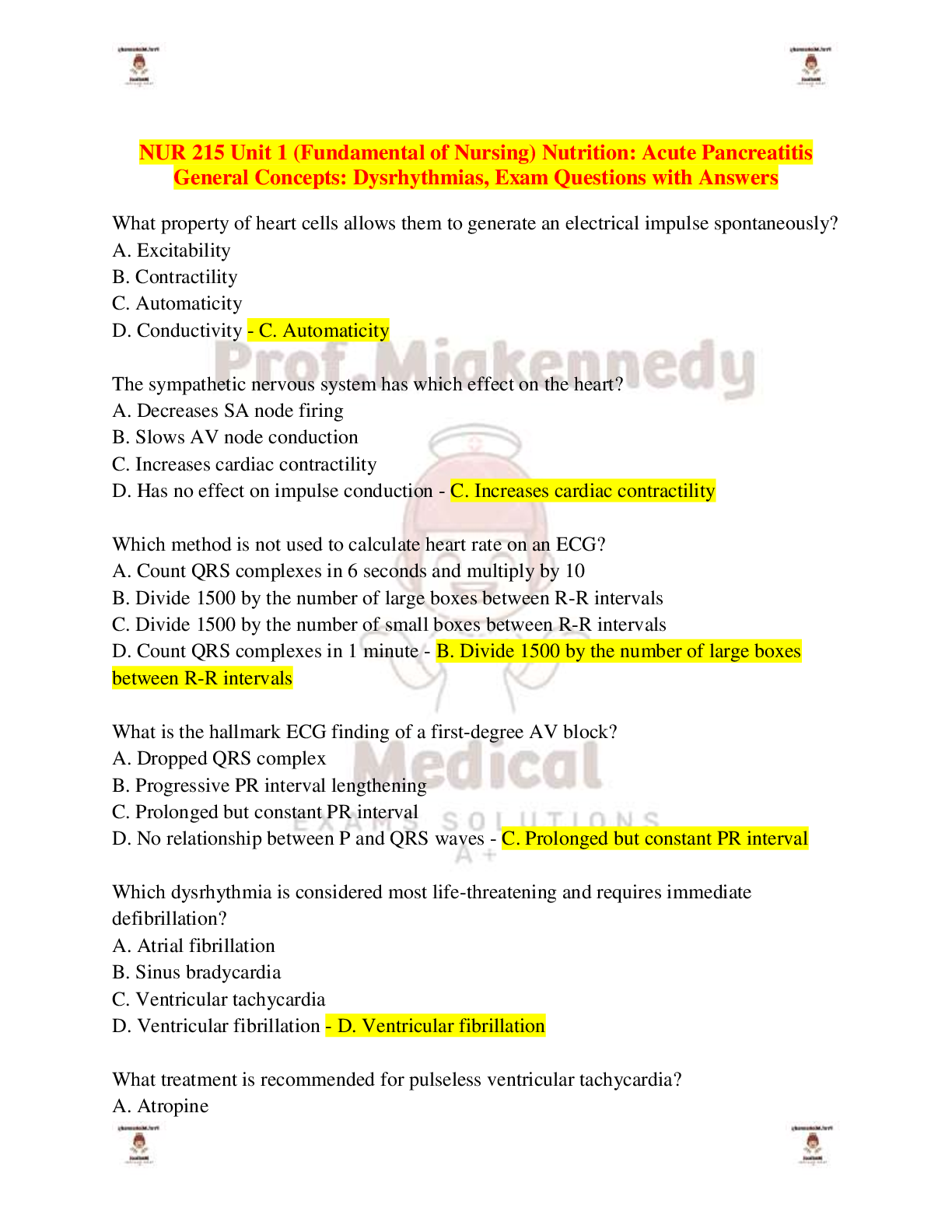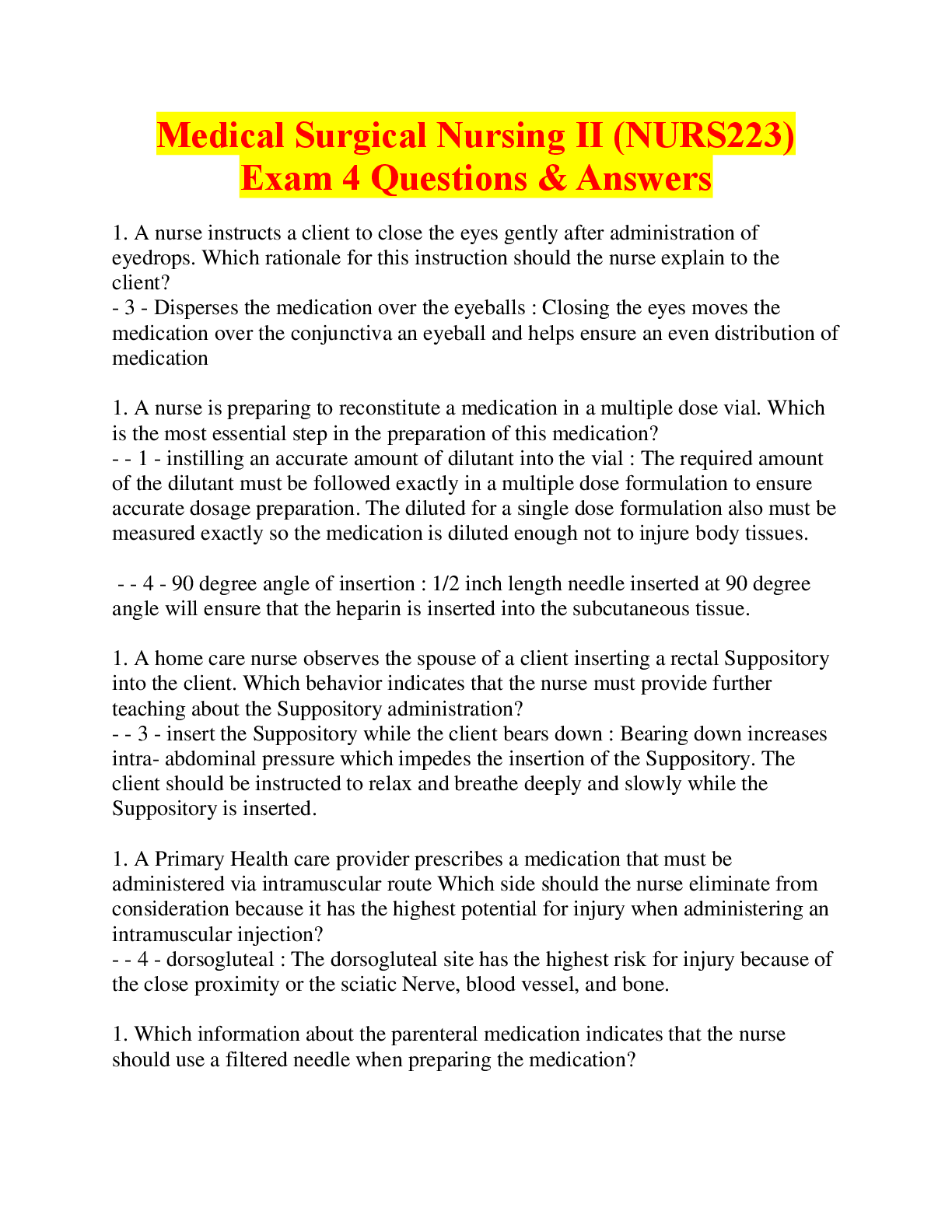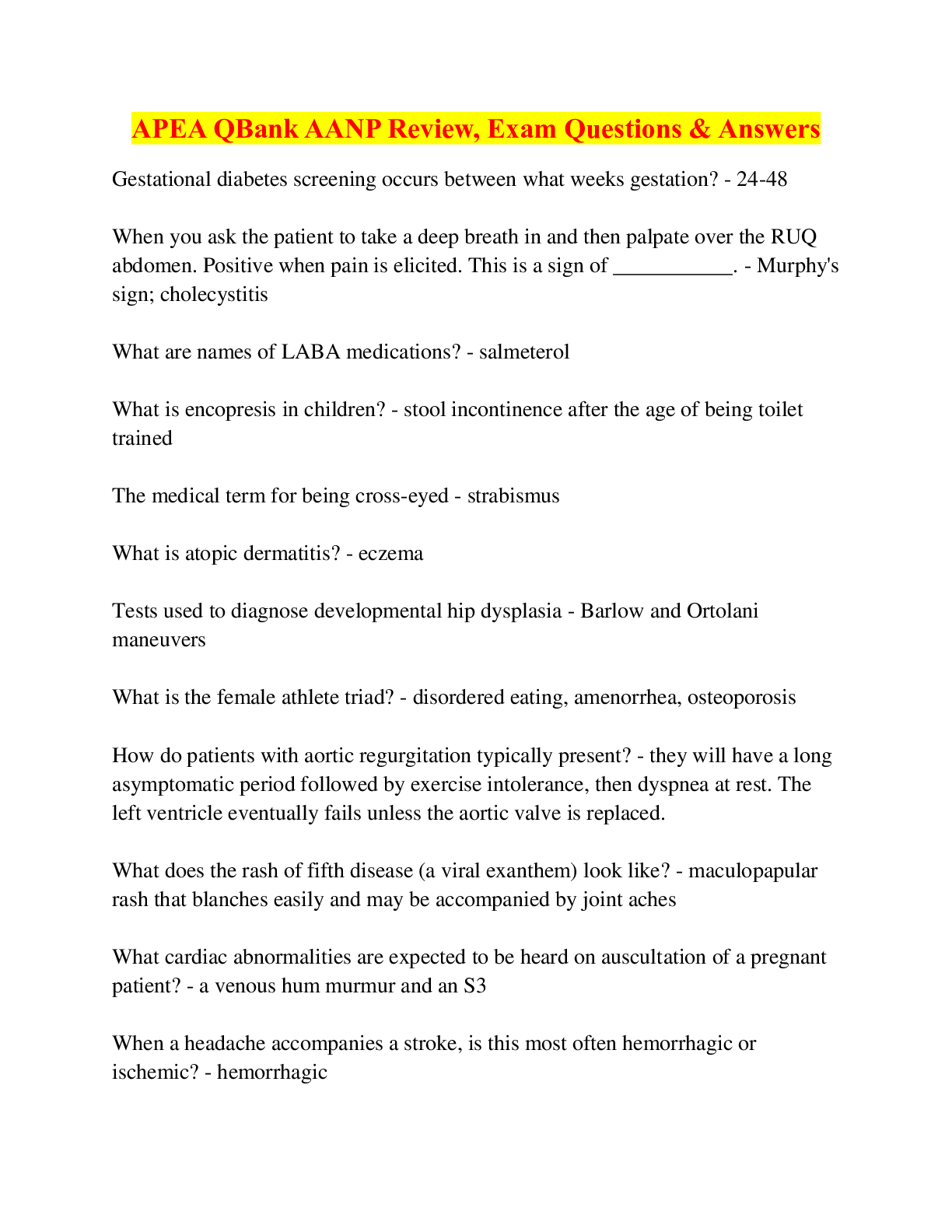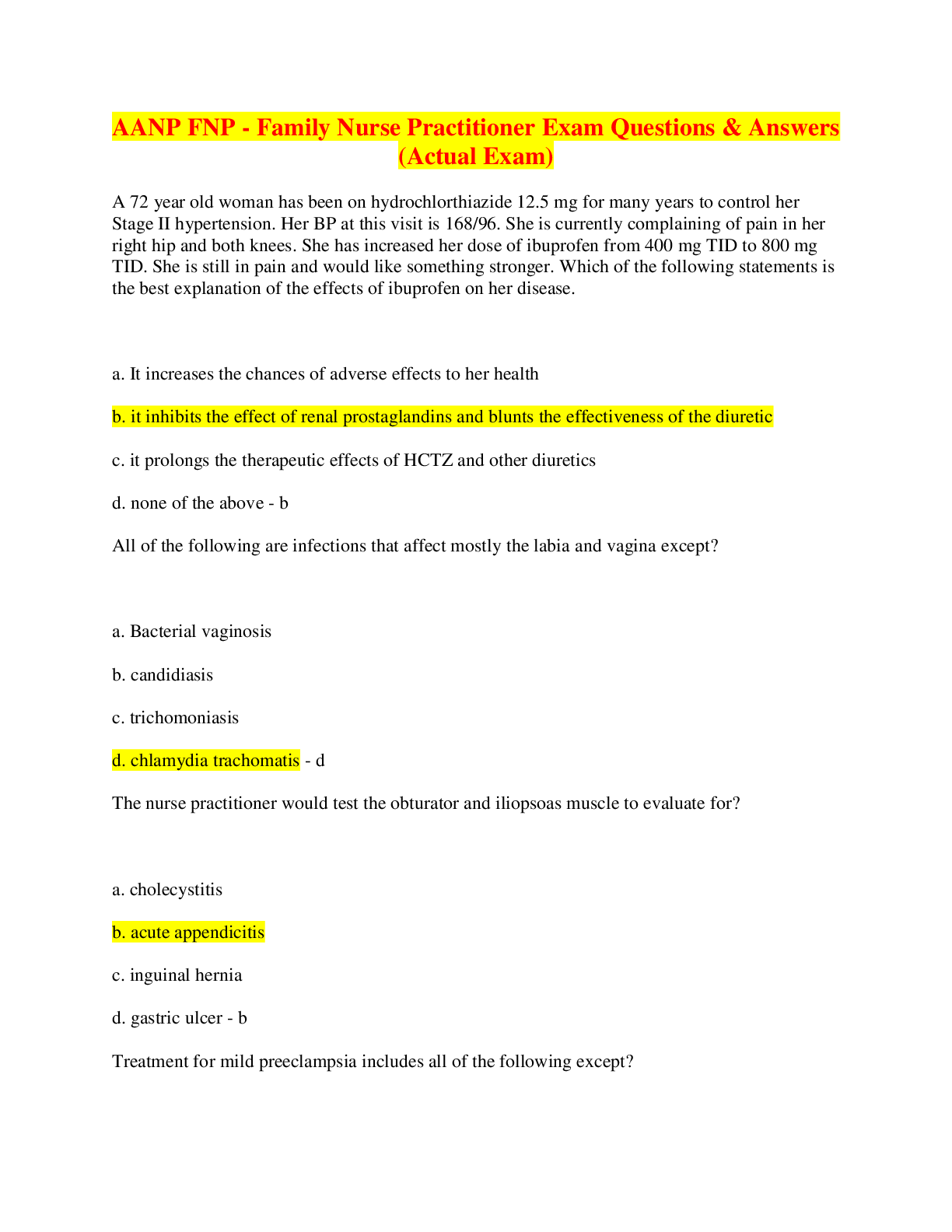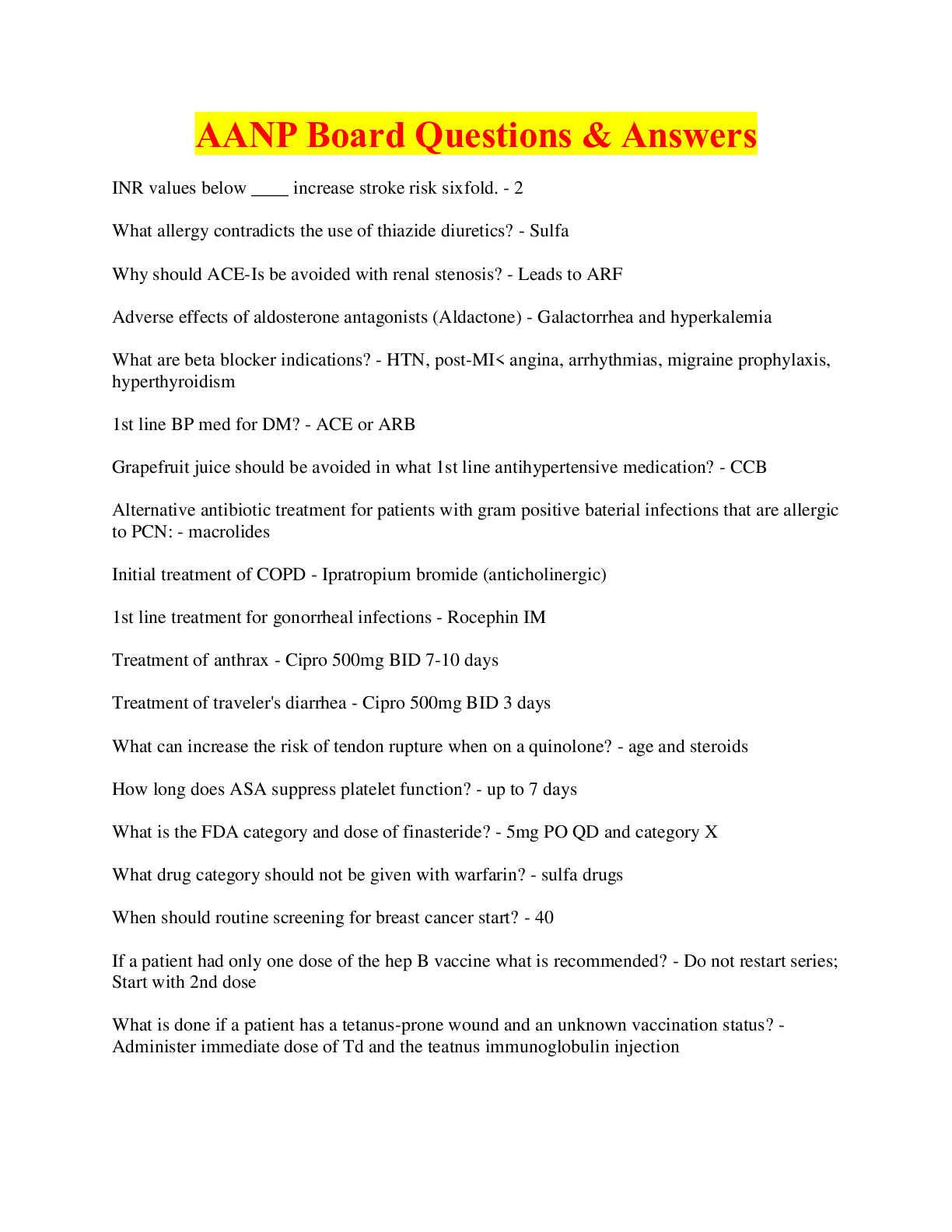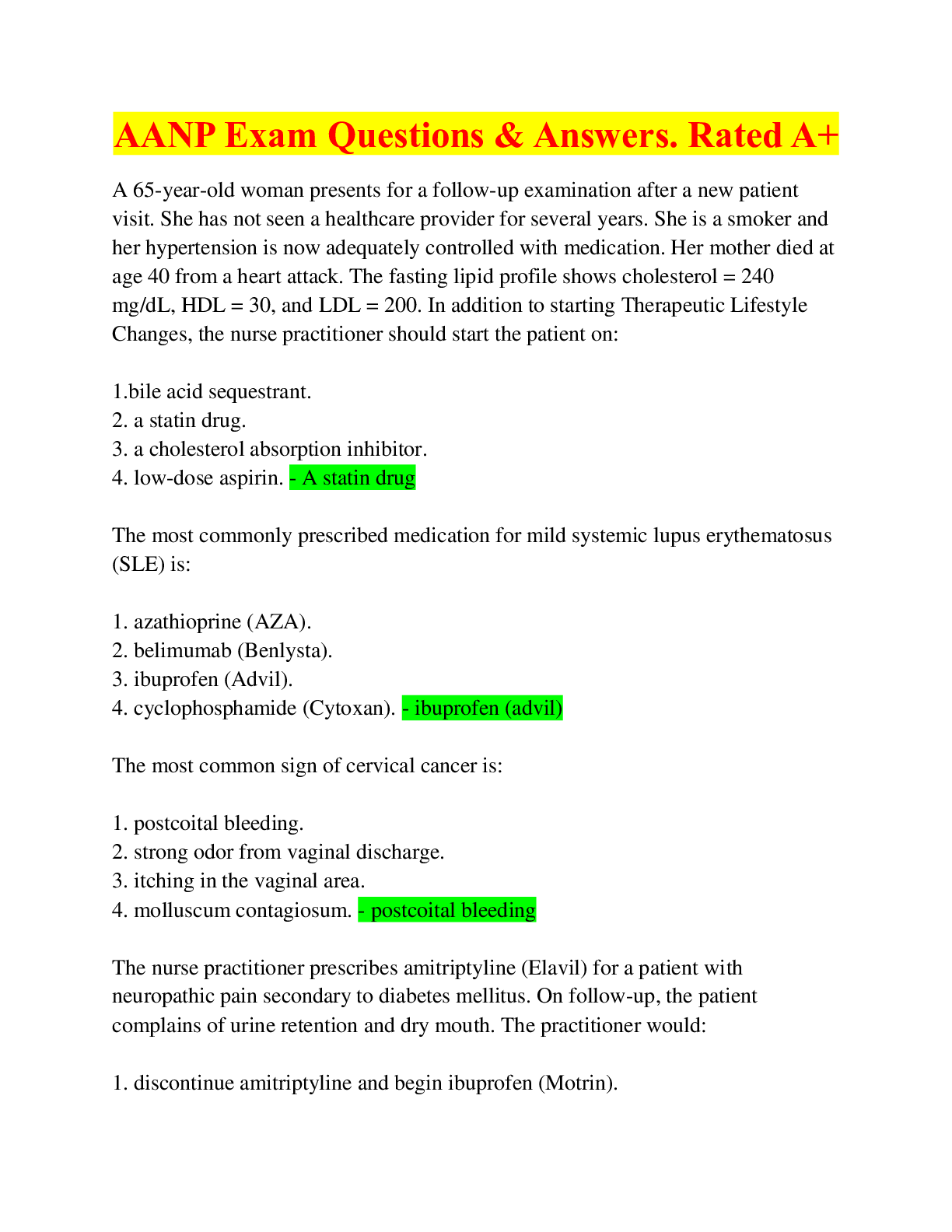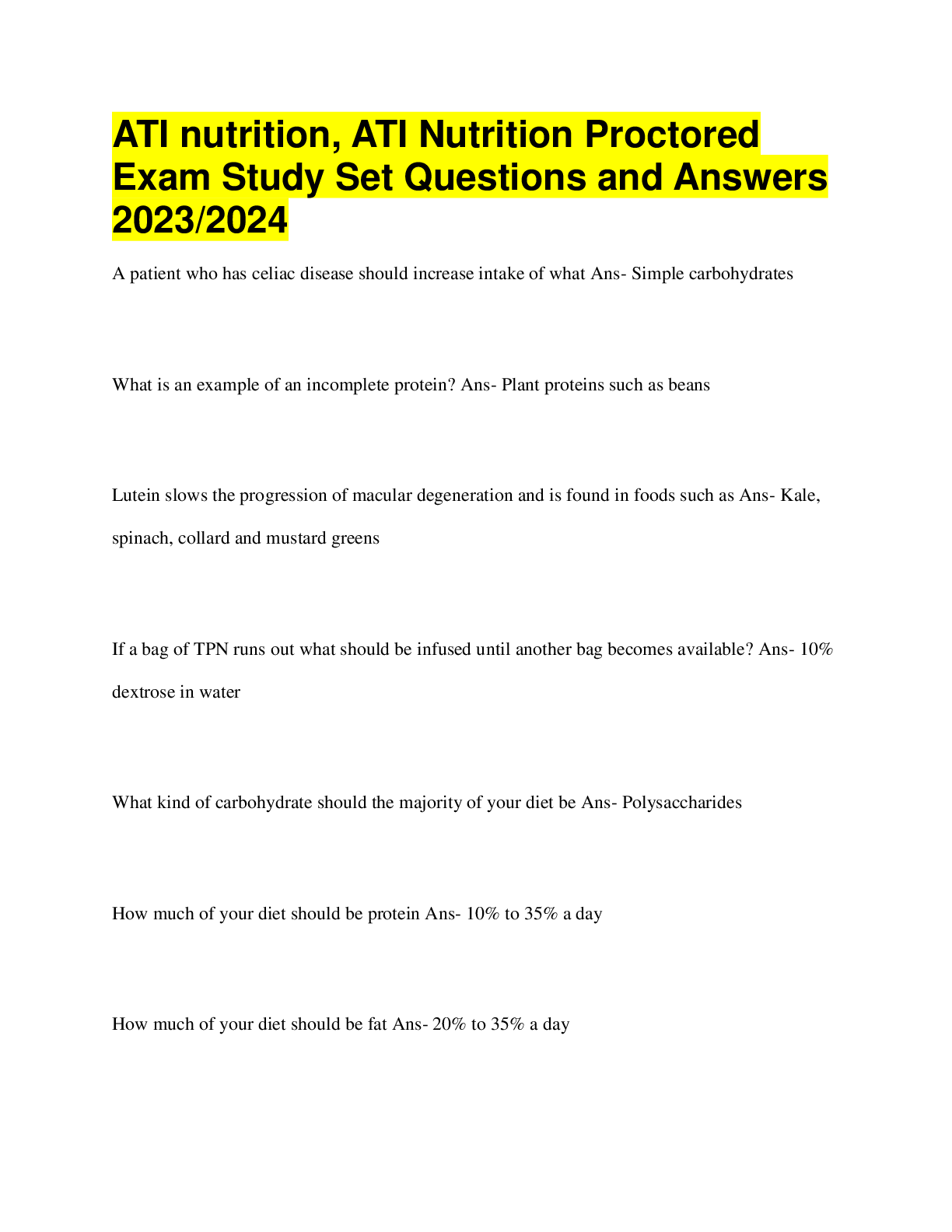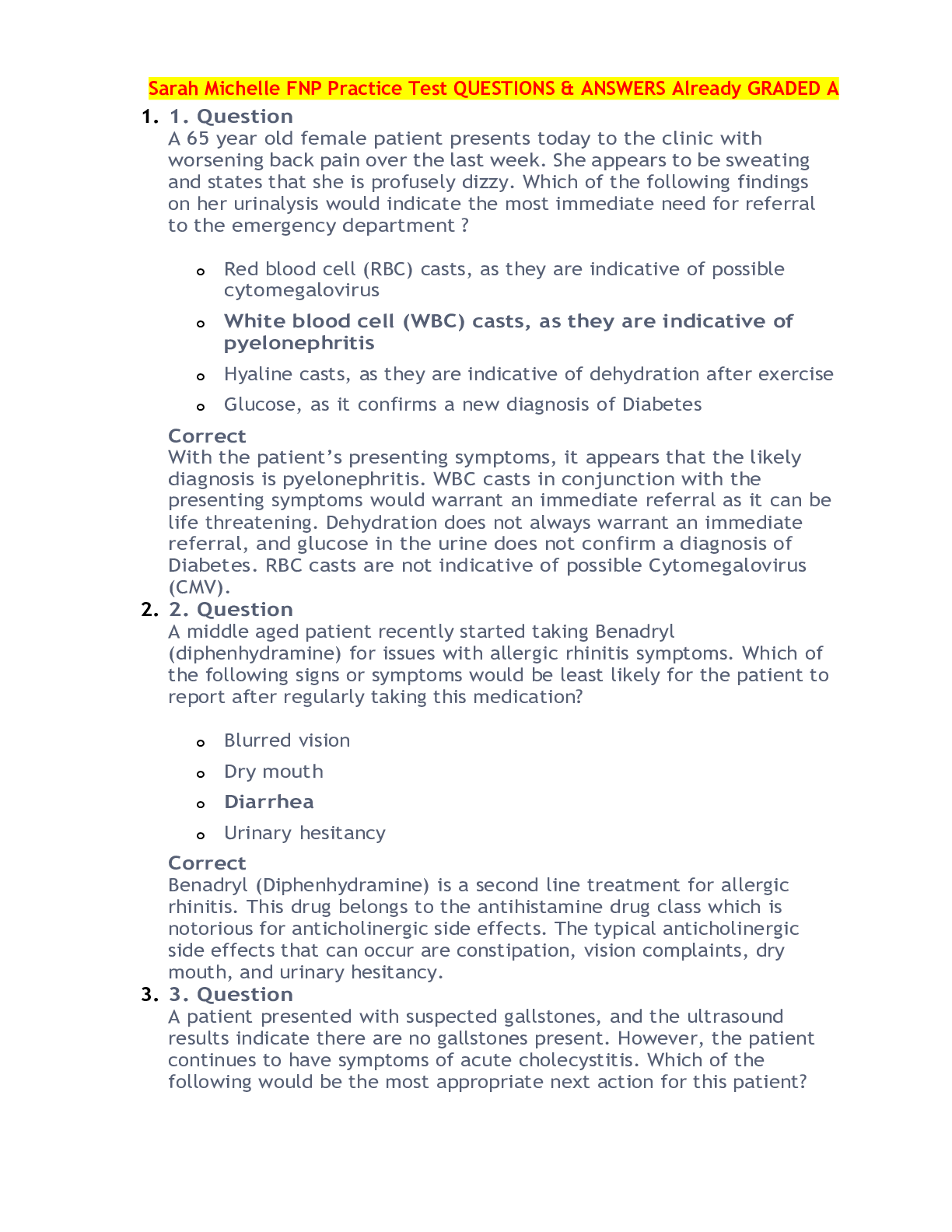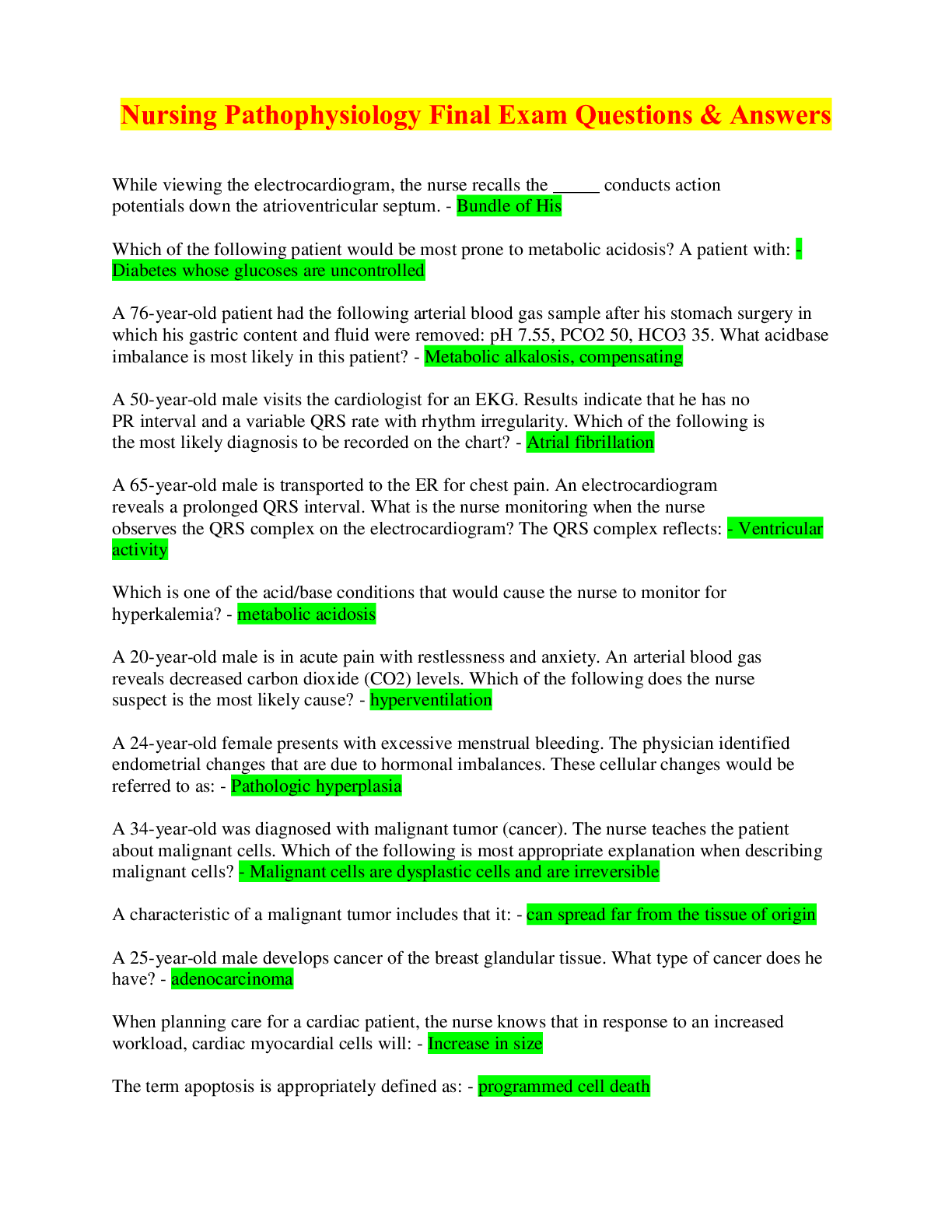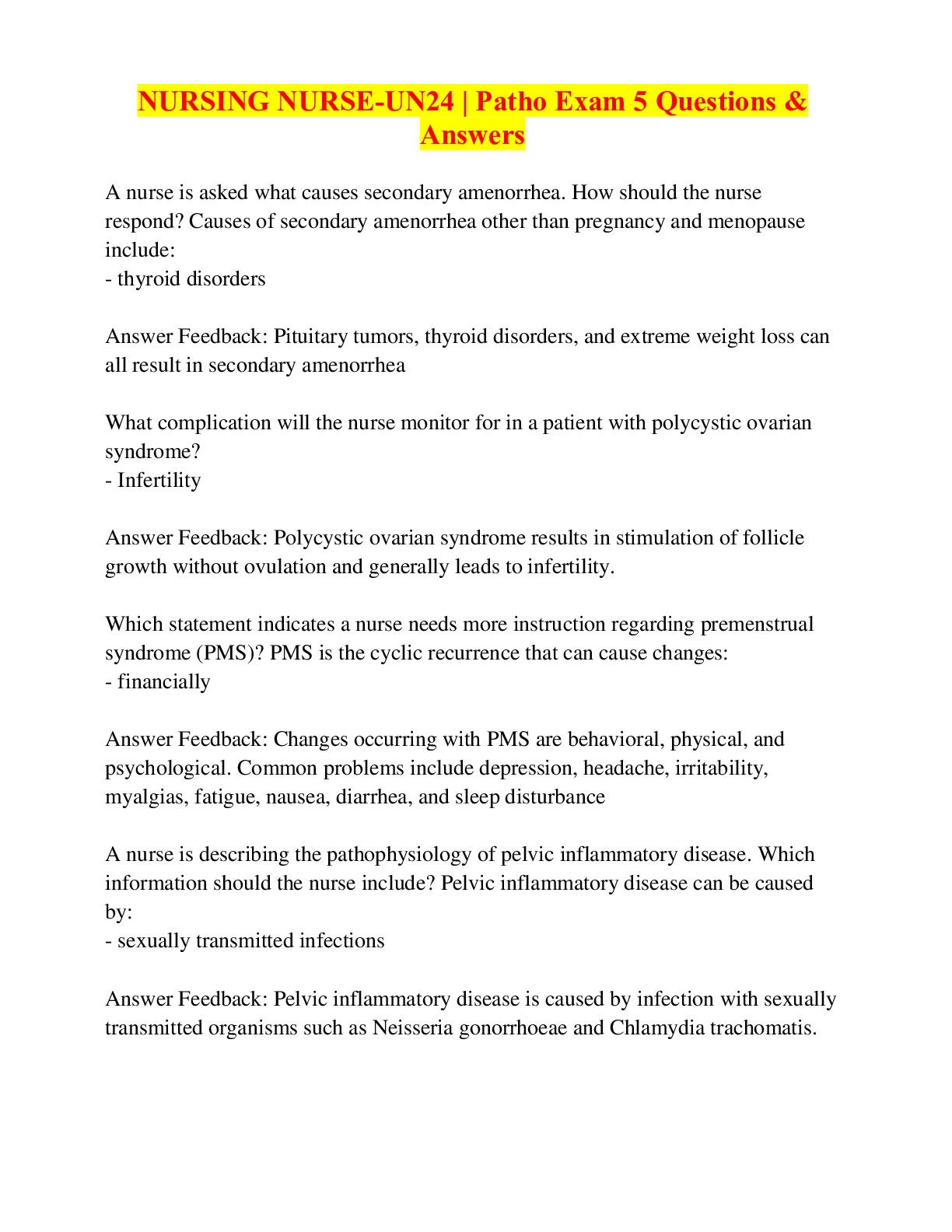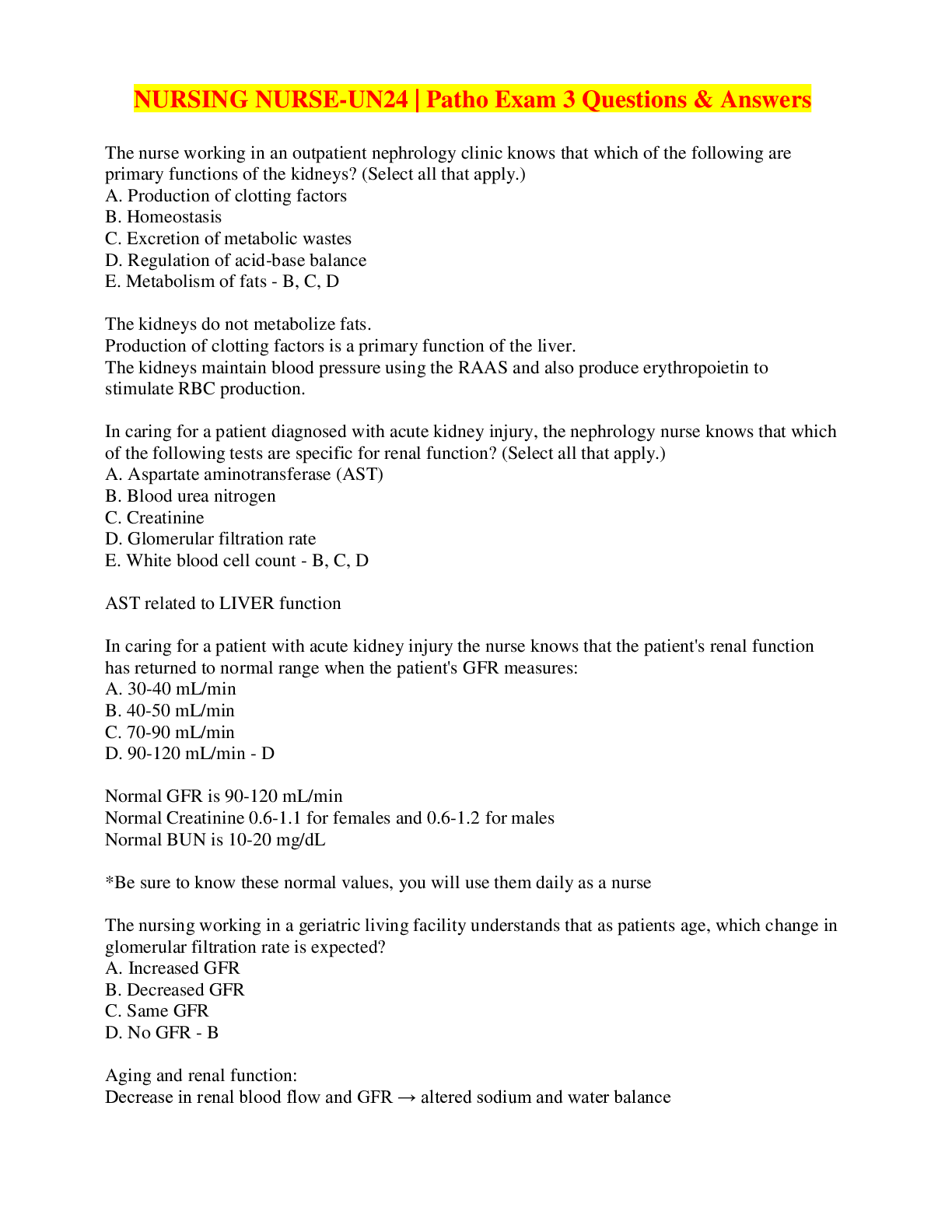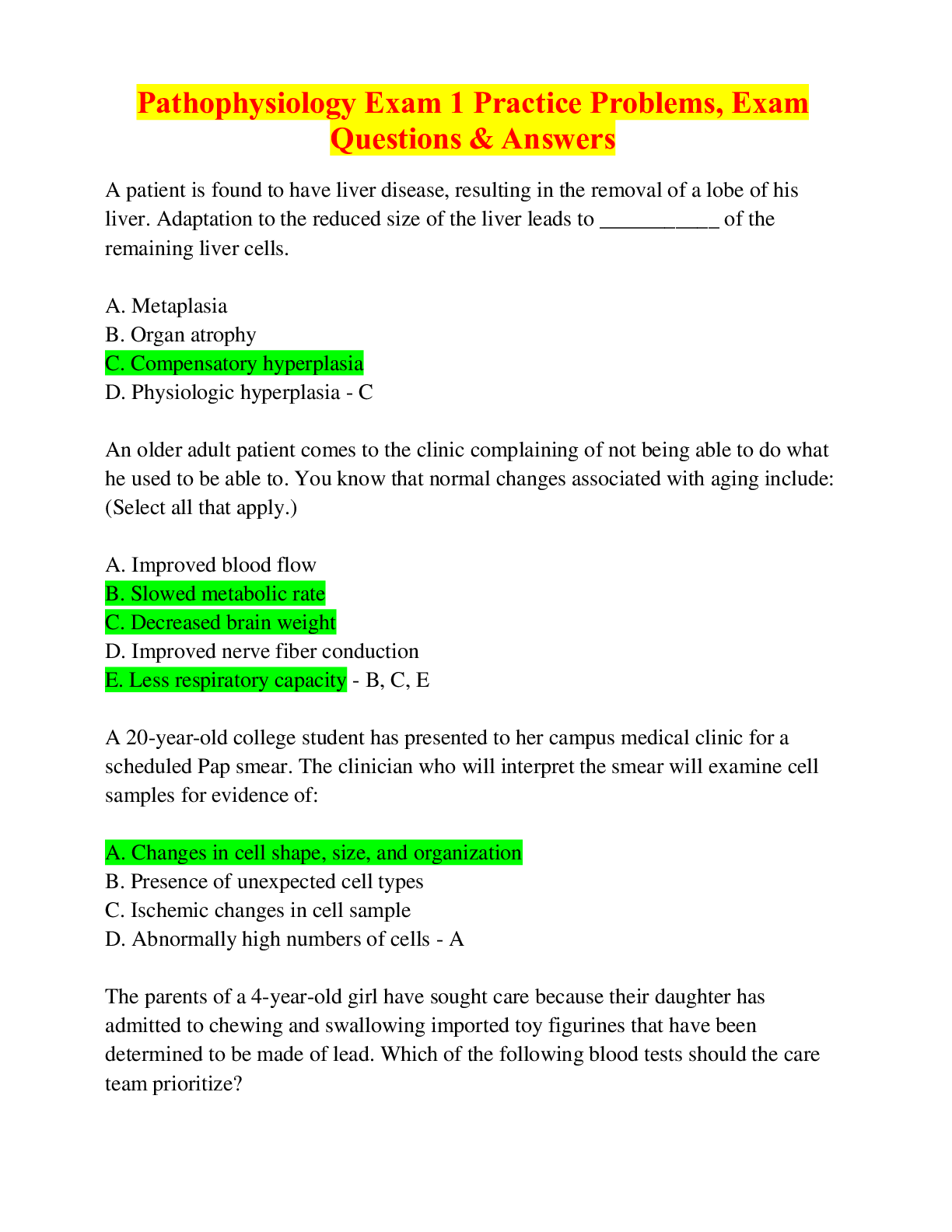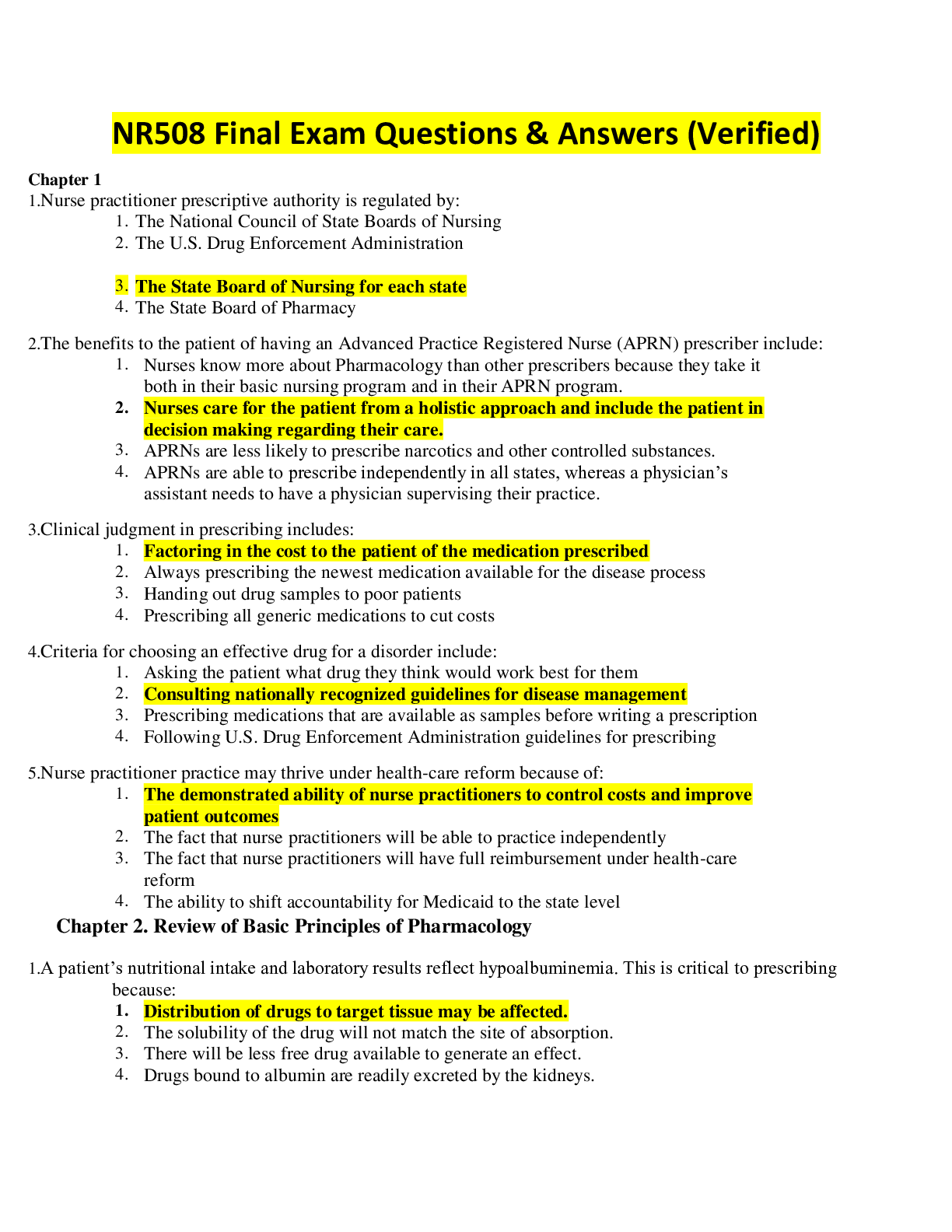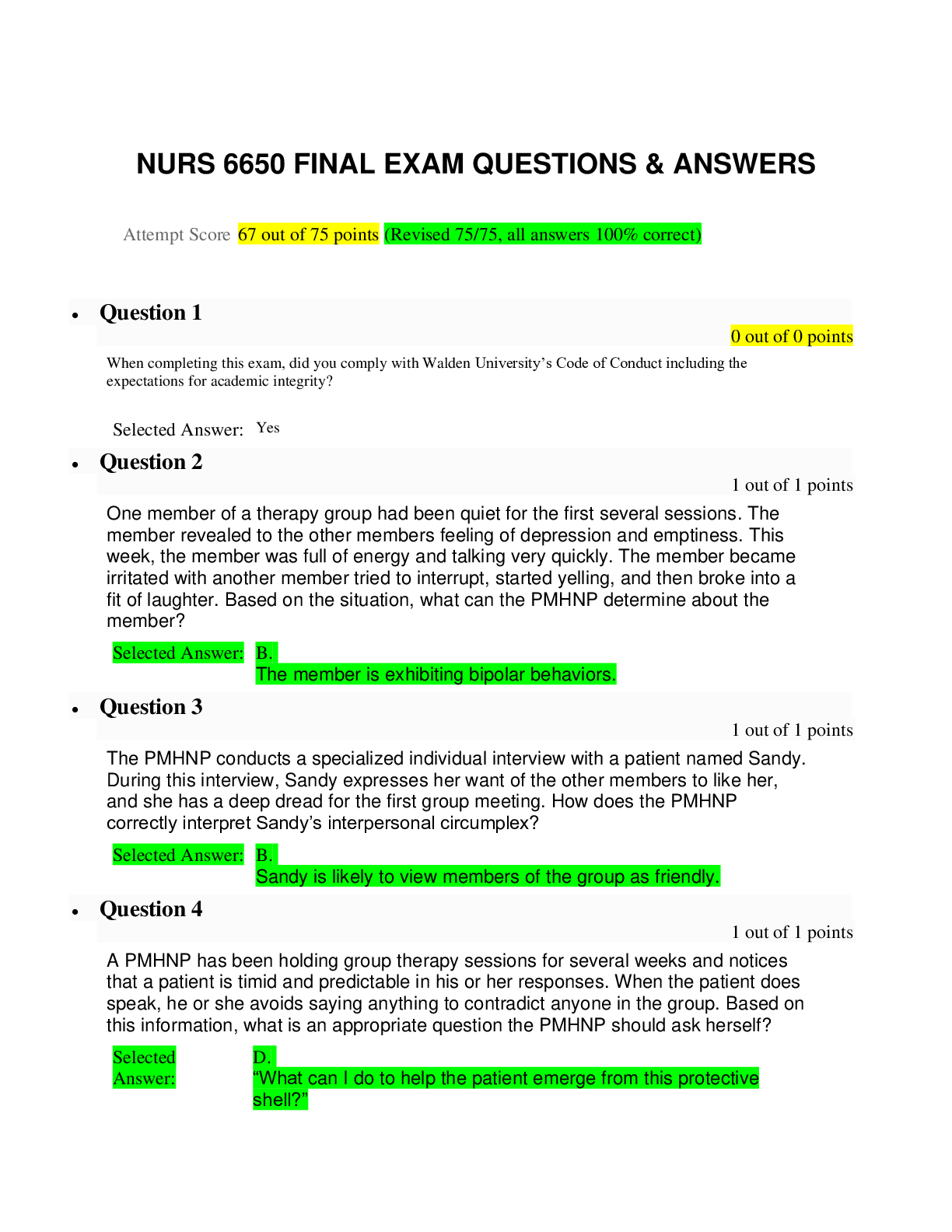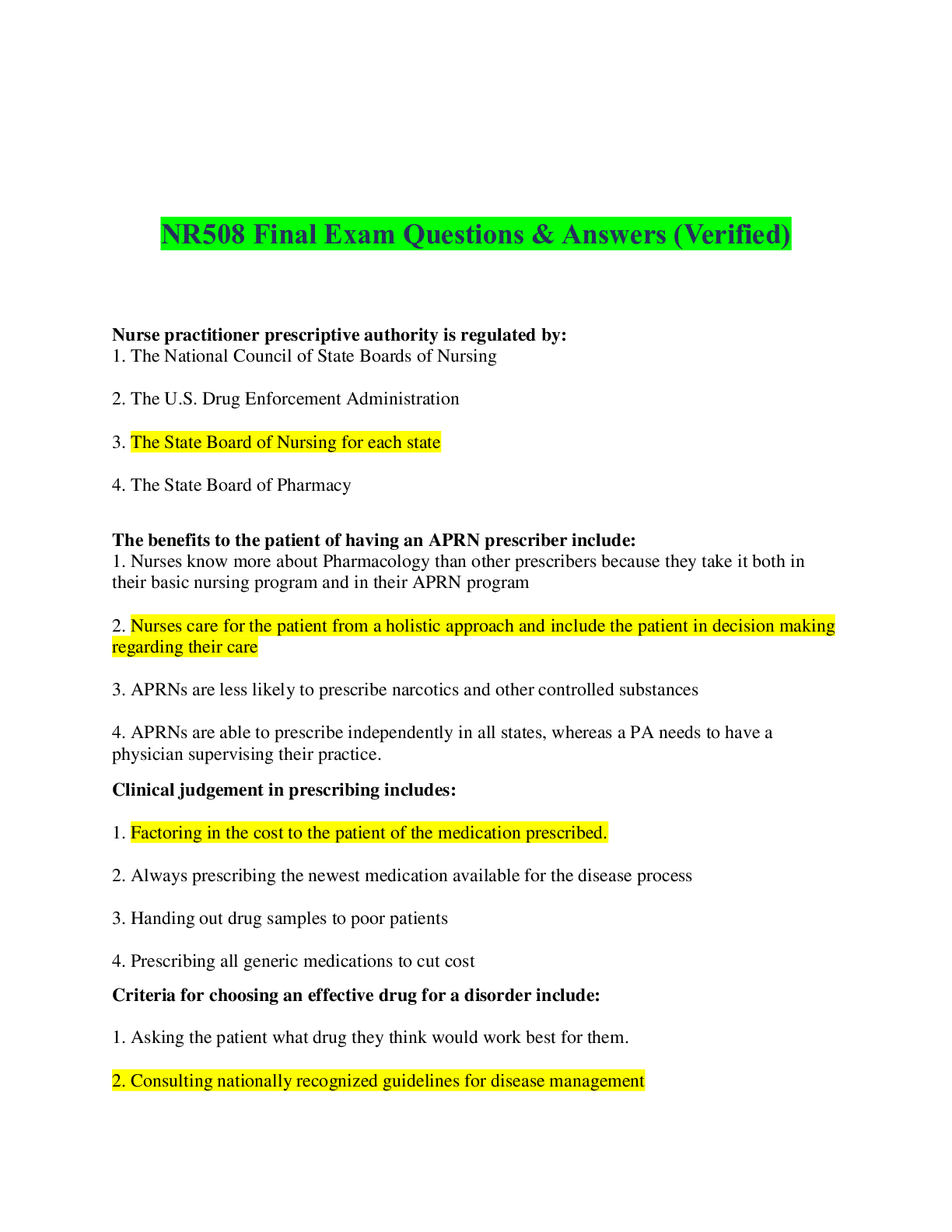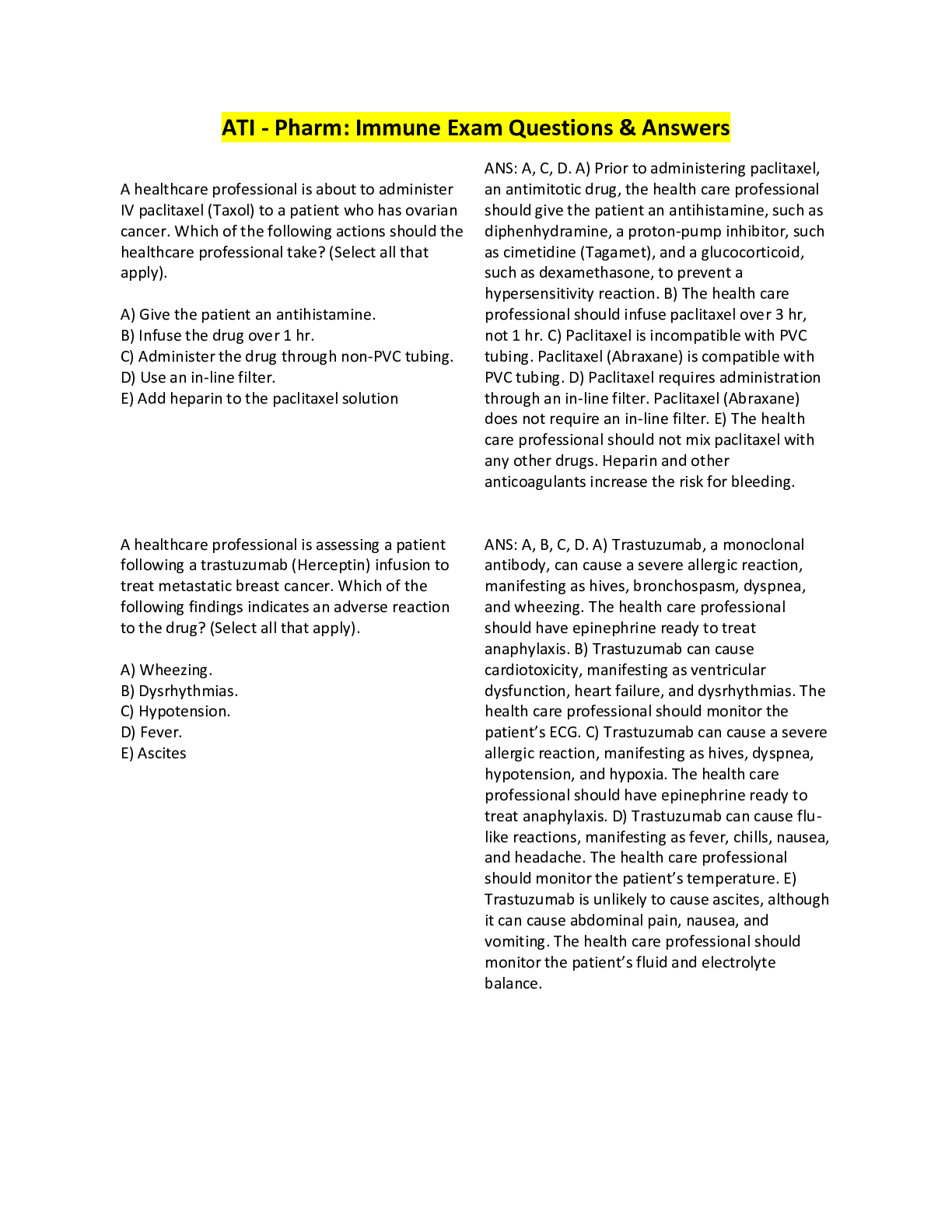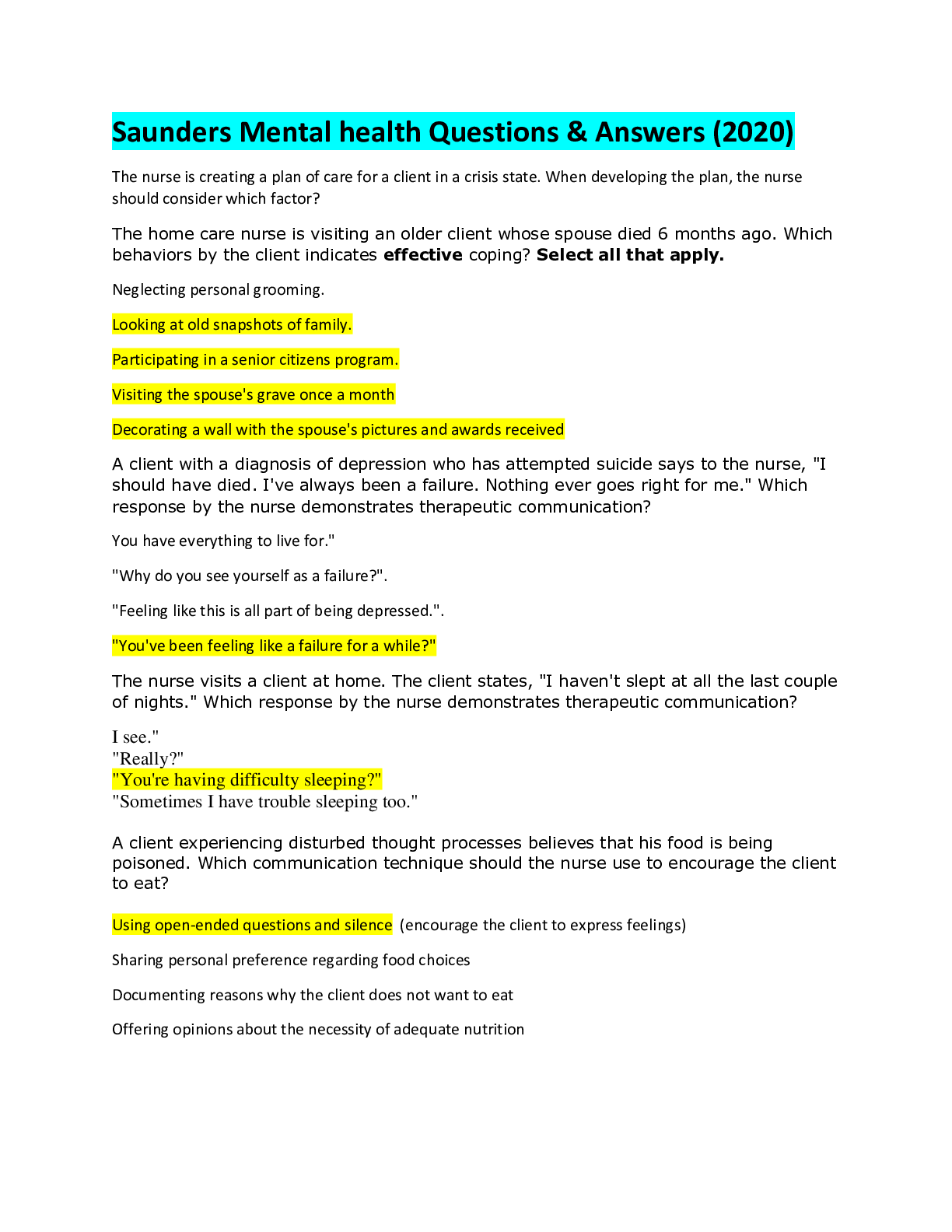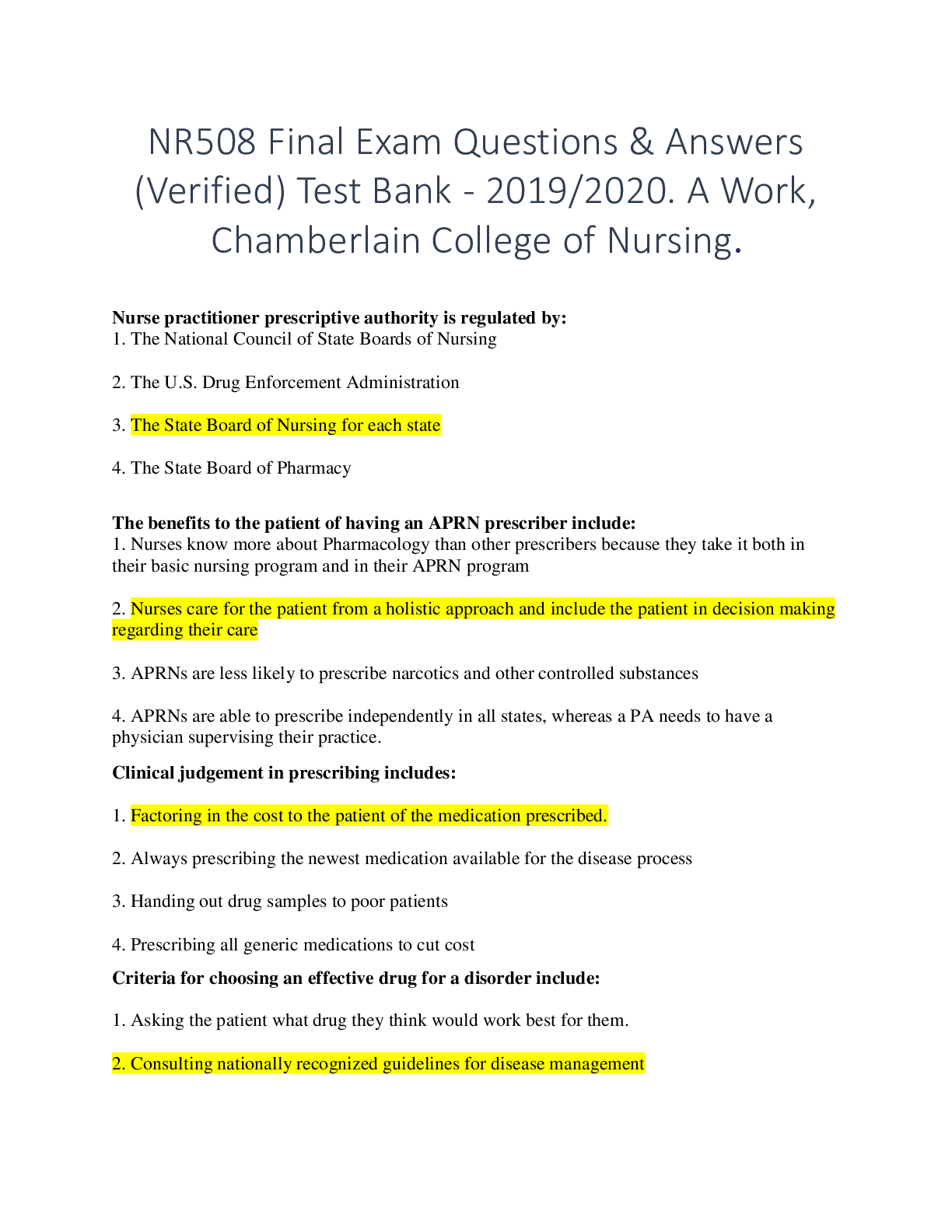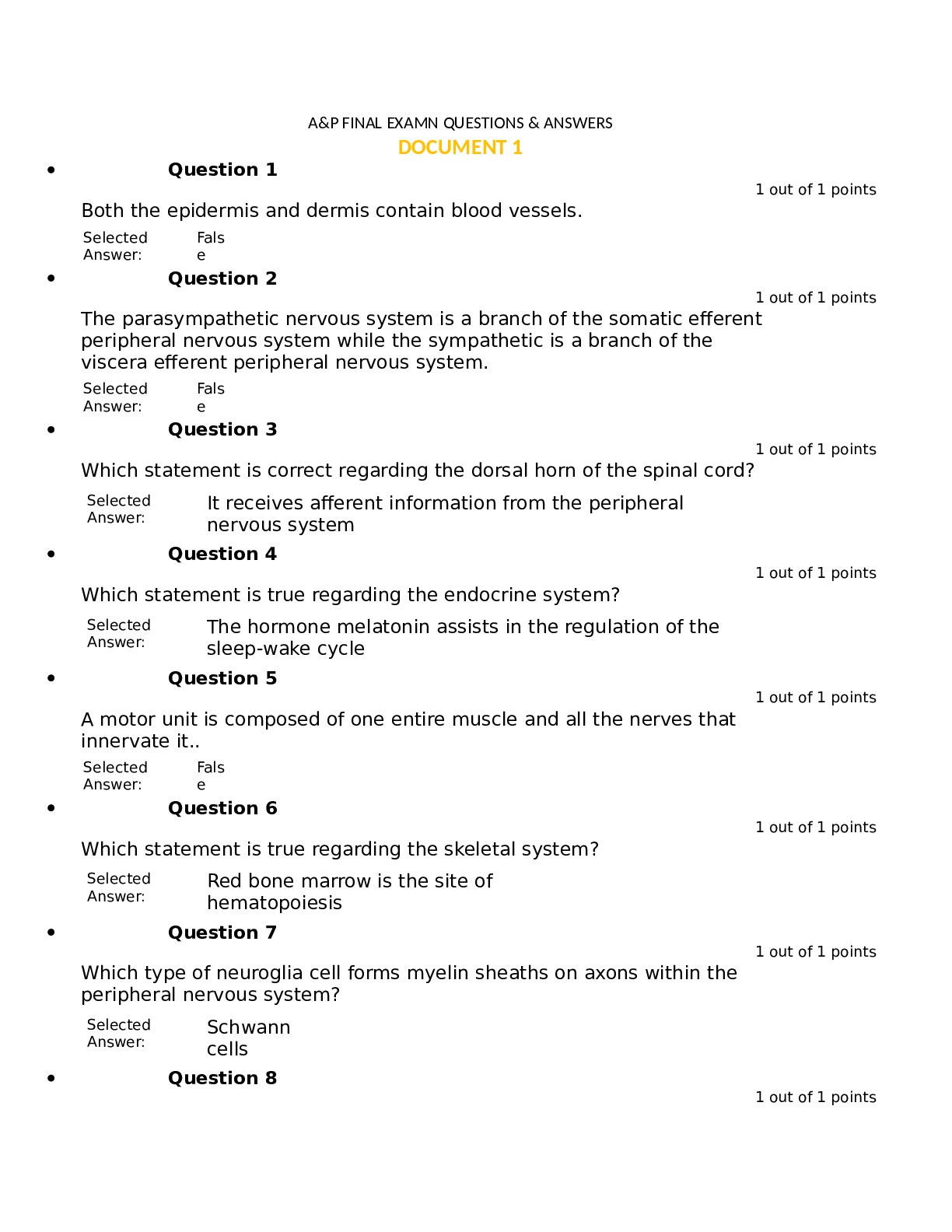*NURSING > EXAM > NUR 215 (Fundamentals of Nursing) Unit 2 Test Exam Questions & Answers, Explained with Rationales, R (All)
NUR 215 (Fundamentals of Nursing) Unit 2 Test Exam Questions & Answers, Explained with Rationales, Rated 100%
Document Content and Description Below
NUR 215 (Fundamentals of Nursing) Unit 2 Test Exam Questions & Answers, Explained with Rationales, Rated 100%-The patient is diagnosed with syndrome of inappropriate antidiuretic hormone (SIADH). What... manifestation would the nurse expect? a. Decreased body weight b. Decreased urinary output c. Increased plasma osmolality d. Increased serum sodium levels-b. Decreased urinary output Rationale: With increased antidiuretic hormone (ADH), the permeability of the renal distal tubules is increased, so water is reabsorbed into circulation. Decreased output of concentrated urine with increased urine osmolality and specific gravity occur. In addition, fluid retention with weight gain, serum hypoosmolality, dilutional hyponatremia, and hypochloremia occur. When caring for a patient with SIADH, what action would the nurse include in the plan of care? a. Monitor neurologic status at least every 2 hours. b. Teach the patient receiving diuretic therapy to restrict sodium intake. c. Keep the head of the bed elevated to prevent antidiuretic hormone (ADH) release. d. Notify the health care provider (HCP) if the patient's BP decreases more than 20 mm Hg from baseline.-a. Monitor neurologic status at least every 2 hours. Rationale: The patient with syndrome of inappropriate antidiuretic hormone (SIADH) has marked dilutional hyponatremia and should be monitored for decreased neurologic function and seizures every 2 hours. Sodium intake is supplemented because of the hyponatremia and sodium loss caused by diuretics. ADH release is reduced by keeping the head of the bed flat to increase left atrial filling pressure. A reduction in BP indicates a reduction in total fluid volume and is an expected outcome of treatment. A patient with SIADH is treated with water restriction. Which findings would indicate that treatment has been effective? a. Increased urine output, decreased serum sodium, and increased urine specific gravity b. Increased urine output, increased serum sodium, and decreased urine specific gravity c. Decreased urine output, increased serum sodium, and decreased urine specific gravity d. Decreased urine output, decreased serum sodium, and increased urine specific gravity-b. Increased urine output, increased serum sodium, and decreased urine specific gravity Rationale: The patient with SIADH has water retention with hyponatremia, decreased urine output, and concentrated urine with high specific gravity. Improvement in the patient's condition is reflected by increased urine output, normalization of serum sodium, and more water in the urine, thus decreasing the specific gravity. The patient with diabetes insipidus presents to the emergency department (ED) with confusion and dehydration after excretion of a large volume of urine today even though several liters of fluid were consumed. What diagnostic test would be done first to help make a diagnosis? a. Blood glucose b. Serum sodium level c. CT scan of the head d. Water deprivation test-d. Water deprivation test Rationale: Patients with diabetes insipidus (DI) excrete large amounts of urine with a specific gravity of <1.005. A blood glucose may be tested if acetone breath is present to diagnose diabetes, but that is not mentioned in this situation. The serum sodium level is expected to be low with DI but is not diagnostic. To diagnose central DI, a water deprivation test is needed. A CT of the head may be done to determine the cause. Nephrogenic DI is distinguished from central DI with determination of the level of ADH after an analog of ADH is given. In a patient with central diabetes insipidus, what is the expected outcome of administering ADH during a water deprivation test? [Show More]
Last updated: 1 week ago
Preview 1 out of 69 pages
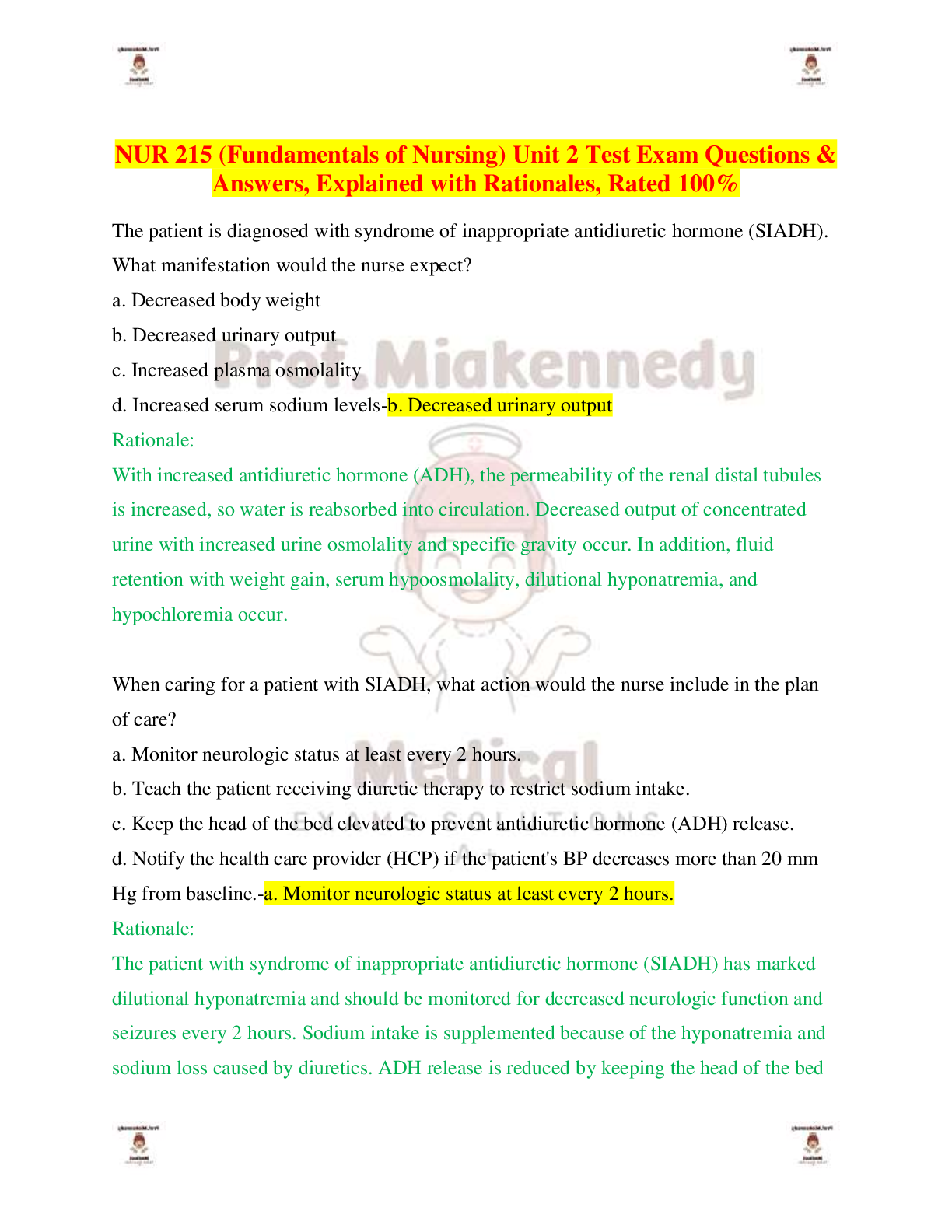
Buy this document to get the full access instantly
Instant Download Access after purchase
Buy NowInstant download
We Accept:

Reviews( 0 )
$17.50
Can't find what you want? Try our AI powered Search
Document information
Connected school, study & course
About the document
Uploaded On
Jul 15, 2025
Number of pages
69
Written in
Additional information
This document has been written for:
Uploaded
Jul 15, 2025
Downloads
0
Views
5
